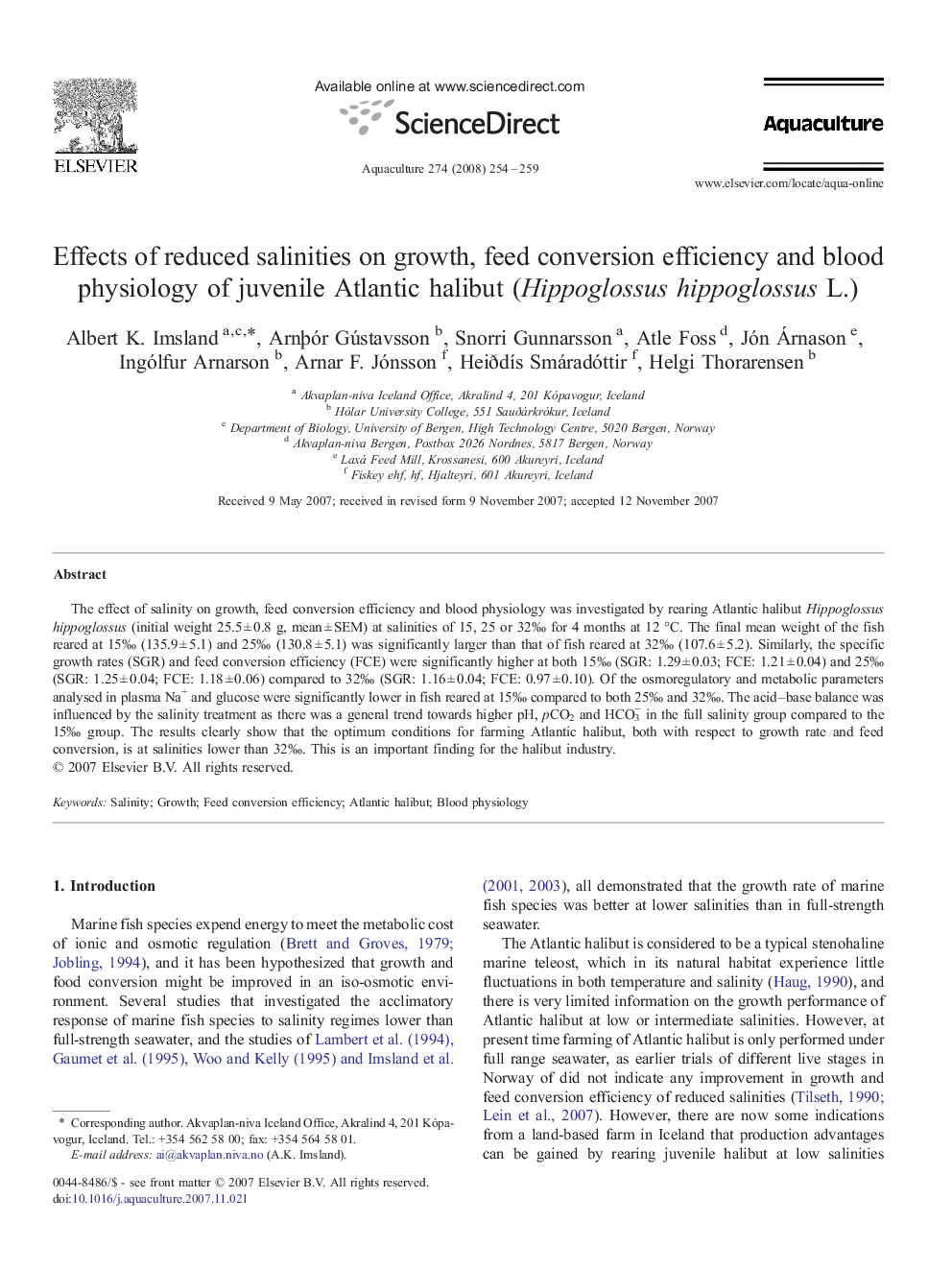| Article ID | Journal | Published Year | Pages | File Type |
|---|---|---|---|---|
| 2424594 | Aquaculture | 2008 | 6 Pages |
The effect of salinity on growth, feed conversion efficiency and blood physiology was investigated by rearing Atlantic halibut Hippoglossus hippoglossus (initial weight 25.5 ± 0.8 g, mean ± SEM) at salinities of 15, 25 or 32‰ for 4 months at 12 °C. The final mean weight of the fish reared at 15‰ (135.9 ± 5.1) and 25‰ (130.8 ± 5.1) was significantly larger than that of fish reared at 32‰ (107.6 ± 5.2). Similarly, the specific growth rates (SGR) and feed conversion efficiency (FCE) were significantly higher at both 15‰ (SGR: 1.29 ± 0.03; FCE: 1.21 ± 0.04) and 25‰ (SGR: 1.25 ± 0.04; FCE: 1.18 ± 0.06) compared to 32‰ (SGR: 1.16 ± 0.04; FCE: 0.97 ± 0.10). Of the osmoregulatory and metabolic parameters analysed in plasma Na+ and glucose were significantly lower in fish reared at 15‰ compared to both 25‰ and 32‰. The acid–base balance was influenced by the salinity treatment as there was a general trend towards higher pH, pCO2 and HCO3− in the full salinity group compared to the 15‰ group. The results clearly show that the optimum conditions for farming Atlantic halibut, both with respect to growth rate and feed conversion, is at salinities lower than 32‰. This is an important finding for the halibut industry.
